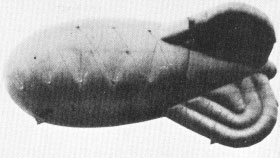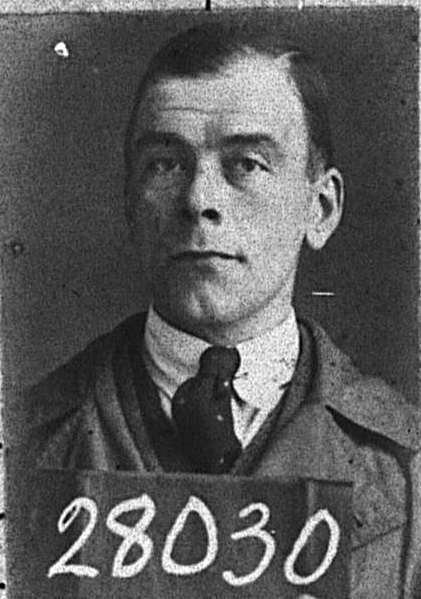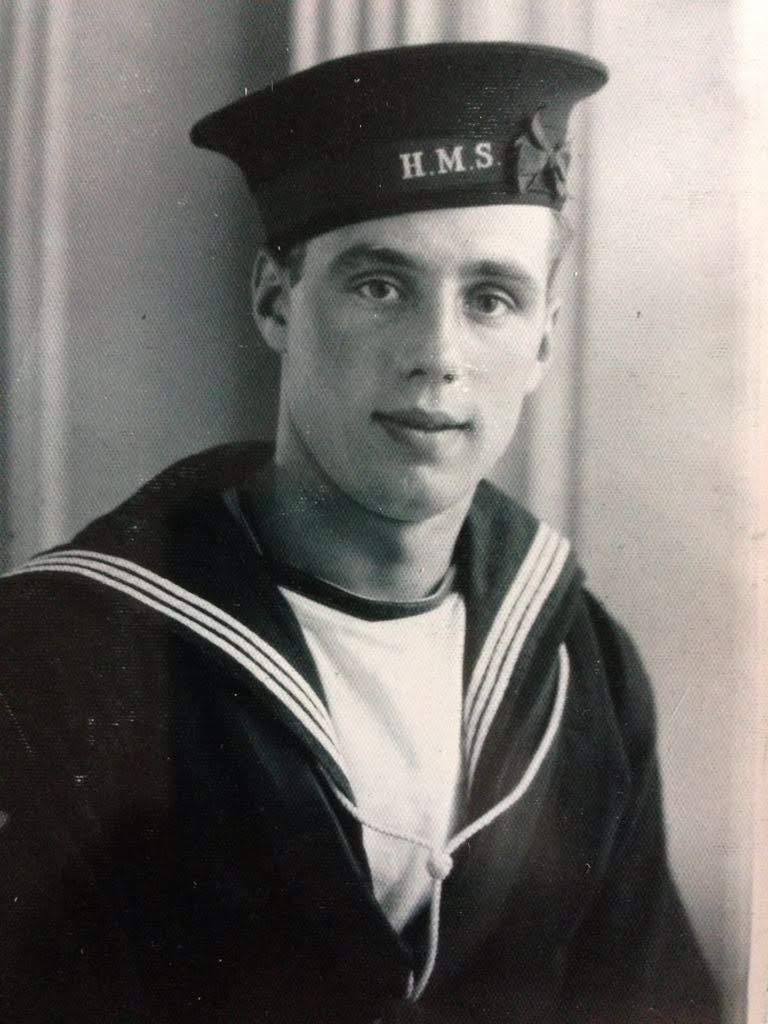 Click
for Site
Directory
Click
for Site
Directory
Lieutenant Commander William Compton Taylor D.S.C. and the Mobile Balloon Barrage


As Second Mate As Lieutenant Commander
William Compton Taylor was born in West Hartlepool on 1st September 1891. He went into the Merchant Marine service and had a Second Mate
Masters Certificate granted by the Board of Trade No.007670. His identity No. in the service was 28030. He served as a Second Mate.
In the Great War he became a Temporary Sub Lieutenant from 30th November 1914 and served on H.M.S. Digby, an armed Merchant Cruiser from
3rd December 1914. On 9th February 1916 he was transferred to H.M.S. Imperieuse, a repair ship. He was described as a: "Satisfactory officer as
far as very limited scope afforded by duty as a harbour watch keeper allows him to be."
He became a Temporary Acting Lieutenant on 3rd June 1916 and a Temporary Lieutenant on 3rd November 1916. On 6th September 1918 he was
posted to H.M.S. Africa, a pre-dreadnought battleship.
He was paid off on 7th November 1918 and demobilised from the navy on 12th February 1919. He was then listed as living at 85 Roslea Drive,
Dennistoun, Glasgow.
It is not known quite what he did between the wars but he is in the 1939 Register and is then living 62 Thornton Street , West Hartlepool C.B.,
Durham, England. He is living with his widowed mother, Harriet A. Taylor (born 16th August 1862). He was working as a Mariner Chief Officer on
H.M.S. Arkleside. This cargo ship was torpedoed on 16th September 1939 and sunk in the Atlantic Ocean 150 nautical miles (280 km) south west of
Land's End, Cornwall by U-33. All crew were rescued by two French fishing vessels. It is not clear if he was on board at the time as the 1939
Register indicates he was discharged on 7th September 1939. It is likely he had the volunteered to join the Royal Navy. He became a temporary
Lieutenant in the royal navy on 29th November 1939.
He first served on H.M.S. Canton an armed merchant cruiser from January 1940 until April 1940. He was then on H.M.S. Carinthia, a converted
armed merchant cruiser which was sunk on 6th June 1940. At 13.13 hours on 6 June 1940 the Carinthia, on a northern patrol, was torpedoed off
the coast of Ireland west of Galway Bay, by the German submarine U-46. The badly damaged ship remained afloat for 36 hours before she sank
during the evening of 7 June 1940. Four people died during the sinking, two crew members and two ratings. He was the sent to H.M.S. René le
Besnerais a tug used as a barrage balloon vessel. This was then sent to protect the maritime convoys to send supplies around the coast.
He became part of the mobile balloon barrage of Convoy CW9.
Convoys of ships were used to take supplies, often coal, around the coastal waters of Britain as it was considered that railways and road transport
could not cope.
Convoys were to sail westbound and given the codename CW followed by a number. The convoys were thus CW1, CW2, and so on.
On the 7th August Convoy Westbound Number 9, (RAF codename PEEWIT), CW9 PEEWIT left Sheerness. Some of the vessels were Elan II, Rene Le
Besnerais, Pingouin, and Sioux. They sailed down the Thames Estuary to meet the assembling convoy off North Foreland. The Convoy Balloon
Officer, Flt Lt A M Puckle on the Barrage Balloon Flotilla Commanders ship, Astral and the rest of the balloon vessels joined the convoy of
twenty-five coasters and nine Royal Navy escort ships by the Nore Light Vessel.
Borealis was at the head of the port column, and leading the Convoy Commodore’s ship SS Empire Crusader, with Astral sailing at the head of the
starboard column and the other balloon vessels spread out down the flank and to the rear. The barrage balloons on the balloon vessels were flying
at around 3,500 feet
As the convoy rounded North Foreland the crews were anxious because this was an area where German dive bombers were known to be active.
The German Stuka plane was a very excellent plane for dive bombing. But with barrage balloons aloft the risk of dive bombing was considered to
be low. After all if a Stuka dive bombed a ship, it would need to comedown in a vertical dive release its bombs and the pull up out of the dive at
around 3,000 feet and in doing so might well strike a balloon cable with disastrous results.
The previous convoy CW8 had sailed the same route and had not been attacked. There was a clear belief that the balloons had been a visible
deterrent to the Luftwaffe to stay away. CW9 went past Folkestone and then Dungeness as the sun was setting. However the Germans had spotted
the convoy and the six barrage balloons protecting it. The Germans planned to attack that night. As darkness fell the convoy was ordered to haul
their balloons down and lash to the decks.
At 0200 hours the convoy was in sight of Beachy Head and the Newhaven area. Just then the crews were aware of a new engine noise, was this
enemy bombers approaching in the dark?
A massive fire-filled explosion took place in the dark and the coaster astern of Borealis was sinking.
Unbeknown to the convoy a number of German E-Boats had been waiting for them and attacked from the inshore side of the convoy.
HMS Borealis made a rapid "hard to port" manoeuvre and the crew were astonished to see a wake from a torpedo miss them by feet. The E-boats
left at around 0415 hours having achieved complete surprise and achieved several kills.
As the dawn rose the order was given to let up the barrage balloons.
The Empire Crusader tried to evaluate what was left of the convoy and keep it back in order. It was a mess , some ships were nowhere to be seen
and others were way behind the protection of the balloons. The E-boats had sunk SS Fife Coast, SS Holme Force, and SS Ouse.
The convoy was ordered to continue as it was not that far from it final destination.
Once again bad luck was given to CW9 when a Dornier 17 spotted the bedraggled convoy at 0620 hours. This had radioed the position to the
Germans and this resulted in a number of Stukas being sent to attack CW9.
The attack had slowed down CW9 so much six additional vessels from the Solent were sailing along expecting to meet up and join with CW9, but
the convoy was nowhere to be seen.
The Stukas arrived over the channel and spotted the six ships waiting for CW9. The Stukas attacked mercilessly and sank SS Ajax and SS
Coquetdale.
The German debriefing of the Stuka pilots made the Luftwaffe realise that they had a great opportunity to attack again. The Luftwaffe sent
aircraft from Stuka I/St G.2 and Stuka III/St G.2 to attack.
The carried just under 250 bombs between them, each one capable of taking out a ship if hit directly. They left their base just before noon. At
this time CW9 was between St. Catherine's Point and The Needles.
HMS Borealis was at the head of the port column with HMS Astral at the head of the starboard column.
At around 1220 hours the Me 109's began attacking the balloon of HMS Borealis and watched with glee as it caught fire and fell into the sea. The
balloon on HMS Astral had been close hauled for some work to be done on it. The Me 109's continued attacking the other four balloons and before
long all four of them were falling out of the sky on fire.
CW9 was now defenceless. It was now the turn of the Stukas to do their work having watched as their fellow fighter planes had cleared the
barrage balloons for them.
A single bomb hit HMS Borealis severing the mast and exploding below the decks, rupturing the hull and allowing water to enter.
The bridge area and wheelhouse were a mess, six crew were injured, three seriously. A balloon operator cut the balloon cable as it was now
dragging on the ship and acting as an anchor. HMS Borealis lagged behind the convoy, damaged but afloat. SS Empire Crusader was sunk and SS
John M, SS Tres, and SS Patersonian were all damaged. HMS Astral then ordered HMS Elan II to begin towing HMS Borealis with all crew not needed
on Borealis to be sent over to HMS Astral. The three seriously injured were taken over to HMS Greenfly.
Known crew members on Borealis were Joseph Cambridge stoker, Charles Willson, Donald Donaldson and an unknown Indian serviceman from Jaipur,
all of whom survived

Joseph Cambridge, stoker who had to jump into the sea when abandoning the stricken HMS Borealis and was picked up and taken to hospital. (Courtesy Cambridge family)
HMS Elan II and HMS Rene Le Besnerais by various means managed to attach themselves to Borealis and steer her along. They set out for
Portsmouth. Between 4000 hours and 500 hours a second attack took place, Borealis was abandoned by the crew. The attack but was rapidly
deterred by British fighters but not until it was hit again by a bomb and began listing heavily and sank. The crew were picked up by Rene Le
Besnerais. It was for this picking up of crew at peril in the sea despite severe enemy action that Commander William Compton Taylor was awarded
the D.S.C.. He was invested with the D.S.C. at Buckingham Palace on 23rd September 1941 with the modest explanation of: "for good services to
the mobile balloon barrage".
He was made a Temporary Acting Lieutenant Commander on 29th August 1940. From February 1940 he served on H.M.S. Victory III, and from
December 1941 he served on H.M.S. Paragon at the Royal Navy Base, Hartlepool, he was still there from 12th August 1943 to October 1944. He left
the Navy in April 1946.
Peter Garwood November 2017